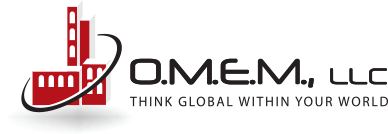Many business owners tend to struggle through tough times. There is a tendency to believe if folks simply buckle down with their current expenses and continue to do what they have always done when things were going well, the situation will eventually tip back in their favor. Even for those business owners whose business is functioning at a steady state, there is a tendency to fall into an organizational comfort zone where they are simply satisfied with how things are going and do not attempt to pursue improvements. The risk involved in this style of leadership increases as economic conditions change in a reasonable manner either positively or negatively. Two underlying mentalities typically exist; Fear of asking external resources for help, or simply an ego which feels the only best interest in the organization lies within. In either case, without reaching out for an external perspective and/or objective view, the options for the growth and improvement are limited only to the depth of knowledge within. While this is not entirely bad, it tends to be limited in depth and scope. Looking outside for an objective perspective can be a huge miss in overall organizational opportunity.
Before any business leader can seek outside assistance and pursue improvement of the internal organization, they need to recognize when they might not currently have all the appropriate answers. Egos and attitudes towards self-improvement and current achievements, can certainly cloud a comfortable perspective. There exist many different circumstances which can dictate the need for a change. The easiest to detect is when a business is struggling to maintain any formal structure or productivity output. These situations are obvious in respect to sustaining any control and keeping the business afloat. Another situation is simply running in a stagnated mode which transitions throughout the workforce producing a false sense of security and comfort. Other circumstances can also exist where an unexpected increase in sales cannot be maintained by current production or service output modes which in turn require a scramble for increased support. Any one of these, among others, can certainly provide a business case for making a change within the organization which will strengthen the overall foundation. There can exist, the old adage of viewing the forest from within the trees, as being the limiting factor to when the organization needs assistance to actually make improvements. Often it is required to have someone outside the organization who can present a more objective perspective, as opposed to only relying on improvements to come from within.
Understandably, putting trust in someone outside the organization can be a nerve racking situation. The common logical presumption typically felt, is no one knows the organization or knows the true best interest of the organization, as does the current leaders. Putting trust into an outsider typically falls under the same process as hiring a new internal leader for the organization. There has to be an interview process of sorts as well as some form of vetting to ensure the person claiming to help, can actually help. The hard part is not determining the answer before you ask the question. If leaders are simply looking for folks who agree with the current strategy and feel things are going the same as they would do it themselves, seeking outside assistance will probably be a futile effort as the leadership will simply be hiring more of them. On the flip side of this logic are those who jump into outside assistance with total submission to whatever is proposed by the hired outside source. Understanding if assistance is hired, there can be a bit of salesmanship in their proposal for improvement. While this certainly should be expected, it will be important to fully understand the facts behind their proposal and fully understand any statistical numbers provided. It is also important to keep in mind, if the current leadership had all the answers, there would not be a need for outside assistance. Finding balance and trust is not easy, but can prove to be a profitable decision. The key is in finding the right outside source who can actually assist and ensure they provide due diligence into their assessment of your organization.
There should be a constant need to improve any business. More than what comes from targeting increased sales. Improving internal structure and functions within the organization can yield lower costs and increased productivity. The key is to not fall into the trap of thinking the current way of operating is the best and only way. For some leaders within an organization, they can sometimes get into their own way. By this I refer to the logic of thinking the path followed for the current achievement level is still the best path moving forward for future growth and sustainability. Many factors can change regardless how subtle they may be, which can greatly impede internal growth and stability. Even more than simple technology improvements. Granted, technology can be a very powerful improvement, without some fundamental structural changes within the workforce or processes, productivity improvements from technology can be greatly limited. It is important for business leaders to keep the business in a constant state of improvement if the long term goal is for future growth and structural stability. Reaching out for an external perspective will not only provide a differing viewpoint, but also potentially uncover gaps or missed opportunities simply from internal staff looking through clouded optics. Consistency applies to processes but that consistency will also uncover opportunities for improvements
and ultimately lower costs.
O.M.E.M., LLC – Helping Businesses Improve
Stay Well
Scott B.
0 Comments
Leave a reply
You must be logged in to post a comment.


